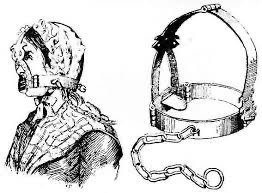Witch Hunt!
James VI of Scotland (aged 20) in 1586
A Wee History:
1563 The Witchcraft Act is signed into law in Scotland.
1590 May 1st: James VI of Scotland (father of Mary Queen of Scots) arrives in Leith harbor with his fleet of 16 ships. A huge bonfire is lit on Salisbury Crag to welcome the King home with his wife Anne of Denmark.
Maybe our ancestors were at the bonfire? Alexander Young’s parents may have taken him to the festivities…
But James has more on his mind than his new bride. He’s obsessed with witches and thinks they were responsible for causing a huge storm that prevented Anne from sailing to Edinburgh the year before.
He learns that two witches were executed in Kronburg for causing that storm and thinks there is a connected plot in Scotland led by his enemy Francis, the 5th Earl of Bothwell. 50 people are executed, including a herbalist Agnes Sampson. She is tortured at the Edinburgh Tollbooth and confesses to 53 charges against her. She claims she tied pieces of a corpse to a cat, sailed out to sea (in a sieve) with the cat and dropped it overboard to create a storm to kill the king.
A Witches Bridle
1597 James publishes “Daemonologie”, an account of witchcraft in Scotland.
1603 James becomes James I of England and Scotland, uniting the two kingdoms.
Between 1563 and 1735 (when the Witchcraft Act ended) at least 3,837 people were accused of witchcraft and some were executed. They were rich and poor, young and old, male and female (although more were female). Many were from the Lothians where the Robertson families lived. There were “witch prickers” whose job it was to test suspected witches for marks of the Devil using pins.
from the Survey of Scottish Witchcraft, The University of Edinburgh
1604 A Witchcraft Act is passed in England thanks to James
1606 William Shakespeare writes Macbeth, drawing heavily on James’ book and his account of the Scottish witch trials.
The Three Witches of Macbeth by Daniel Gardner 1775
1696 There’s a famous witch trial in Paisley involving Christian Shaw, the 11 yr old daughter of a local laird who fell mysteriously ill. She accused another girl of witchcraft and it resulted in seven people being strangled and burned on Gallow Green. Their remains were buried at a crossing known as Maxwellton Cross.
Our ancestor James Gibb and his wife Isobel Stevenson were living in Paisley at the time. Did they see the spectacle?
1735 By this time people don’t believe in witches and the Witchcraft Acts are repealed in Britain. A person who claimed to have the power to call up spirits, or foretell the future, or cast spells, or discover the whereabouts of stolen goods, was to be punished as a con artist, subject to fines and imprisonment.
The last person to be executed for witchcraft in Scotland was Janet Horne in Dornoch, Sutherland in 1727. Her daughter had deformities and Janet was accused of using her daughter as a pony to ride to the Devil. She and her daughter were found guilty and sentenced to be burned at the stake. The daughter escaped but Janet was stripped, tarred, paraded through the town and burned alive.
In March 2022 Scotland issued a formal apology to those who suffered:
https://www.theguardian.com/uk-news/2022/mar/08/nicola-sturgeon-issues-apology-for-historical-injustice-of-witch-hunts
“Pain inflicted - Suffering Ended - Injustice Done”
Memorial to the Paisley Witches




